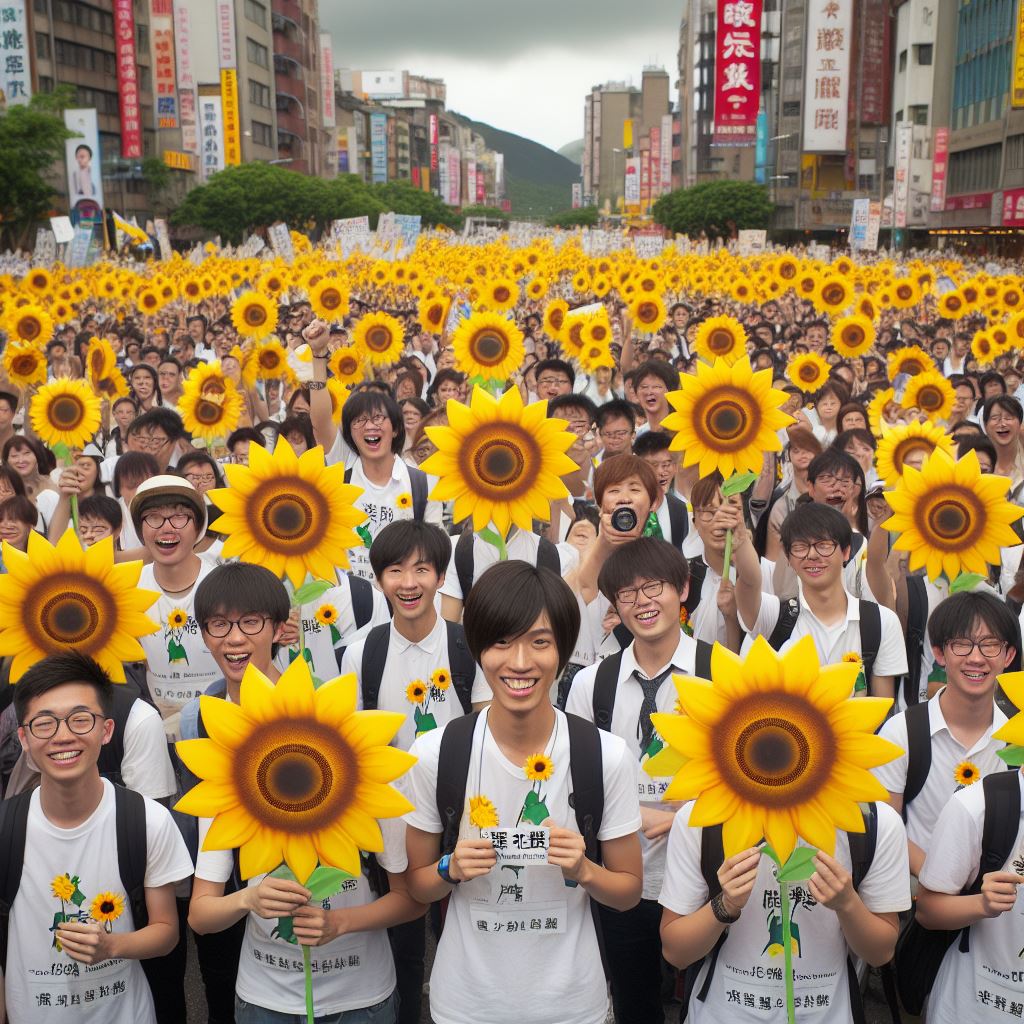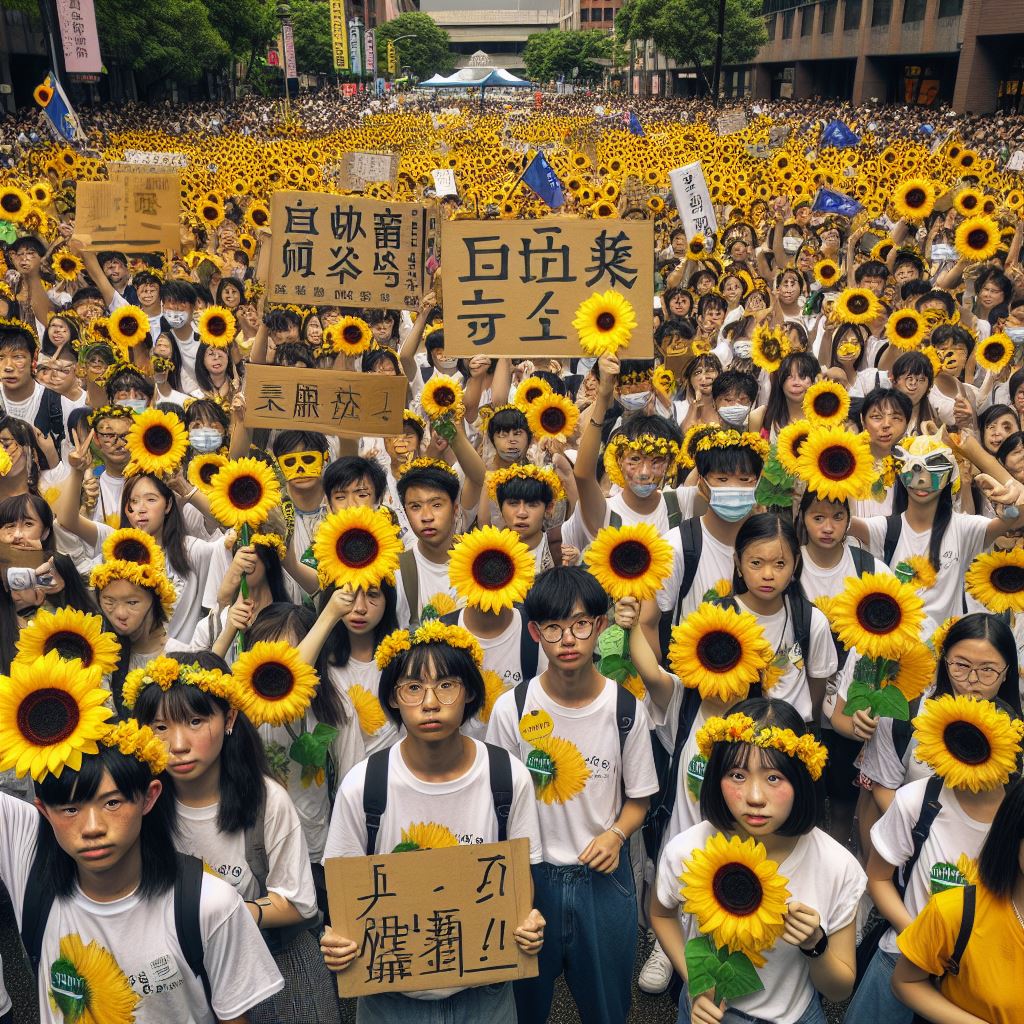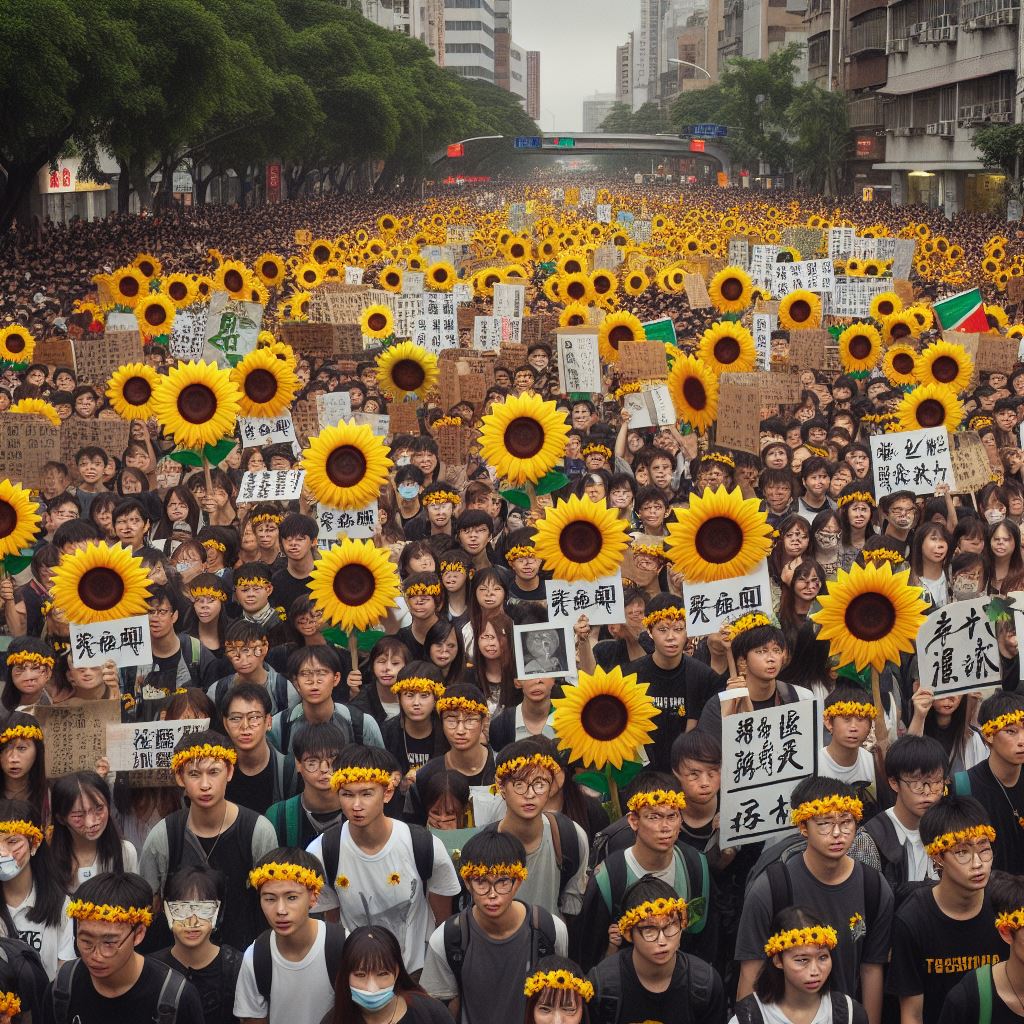立法院再次被包圍,什麼是太陽花學運?
什麼是太陽花學運?
太陽花學運,正式名稱為「318青年占領立法院運動」,是台灣於2014年發生的一場重要社會運動。這場運動的起因是對於《海峽兩岸服務貿易協議》(簡稱服貿協議)的抗議。該協議是台灣與中國大陸在2013年簽署的,旨在進一步開放兩岸服務業市場。然而,許多台灣民眾擔心該協議會對台灣的經濟主權和民主體制帶來負面影響,並認為政府在簽署和審議過程中缺乏透明度和公眾參與。
2014年3月17日,立法院內政委員會召開會議,國民黨籍立委張慶忠宣布服貿協議已經完成逐條審查,送交立法院院會進行表決,這一舉動引發在野黨和社會各界的強烈不滿。隔天,3月18日晚間,數百名學生和民眾湧入立法院,開始占領議場,以抗議服貿協議的通過。
在隨後的數日內,占領立法院的行動迅速擴大,數千名學生和支持者湧入立法院周邊的街道,形成大型集會。運動期間,抗議者提出幾項主要訴求,包括:
退回服貿協議,重新進行審查。
建立兩岸協議監督機制,確保未來兩岸協議的簽署過程透明且具公眾參與。
促進政府與民間對話,增加決策過程的透明度。
3月23日,部分抗議者甚至進一步占領行政院,試圖引起更大社會關注。然而,警方在次日凌晨進行強制驅離,導致數十名抗議者受傷,這一事件進一步激發社會輿論的關注和支持。在持續24天的占領行動後,學生和政府進行一系列談判和對話。4月7日,抗議者宣布撤離立法院,但表示將繼續推動服貿協議的重新審查和兩岸協議監督機制的建立。整個抗議行動在4月10日畫下句點。
太陽花學運對台灣社會產生深遠影響。首先,它成功推動服貿協議的重新審查,並迫使政府在未來的兩岸協議中更加重視透明度和公眾參與。其次,這場運動也激發年輕一代對政治的關注和參與,促成後續一系列社會運動和政治改革。
這也象徵著台灣年輕世代對民主和主權的強烈捍衛,凸顯公民社會在面對政府決策時的監督和參與能力。這場運動不僅影響台灣的政治生態,也在全球範圍內引起廣泛關注,成為現代社會運動史上的一個重要案例。
The Sunflower Student Movement, formally known as the "318 Youth Occupation of the Legislative Yuan," was a significant social movement in Taiwan that occurred in 2014. The movement was triggered by protests against the Cross-Strait Service Trade Agreement (CSSTA). This agreement, signed between Taiwan and China in 2013, aimed to further open the service sectors of both economies. However, many Taiwanese citizens were concerned that the agreement would negatively impact Taiwan's economic sovereignty and democratic system. They also believed that the government lacked transparency and public participation in the signing and reviewing process of the agreement.
On March 17, 2014, the Legislative Yuan's Internal Administration Committee held a meeting where KMT legislator Chang Ching-chung announced that the CSSTA had been reviewed clause-by-clause and was ready to be sent to the Legislative Yuan plenary session for a vote. This move sparked strong discontent among opposition parties and the public. The next evening, on March 18, hundreds of students and citizens stormed the Legislative Yuan and began occupying the chamber to protest the passing of the CSSTA.
In the following days, the occupation of the Legislative Yuan expanded rapidly, with thousands of students and supporters flooding the surrounding streets, forming large-scale gatherings. During the movement, protesters raised several key demands, including:
The retraction of the CSSTA and its reevaluation.
The establishment of a mechanism to monitor cross-strait agreements to ensure future agreements are signed with transparency and public participation.
Promoting dialogue between the government and civil society to enhance the transparency of decision-making processes.
On March 23, some protesters further occupied the Executive Yuan, attempting to draw greater public attention. However, police conducted a forceful eviction in the early hours of the next day, resulting in injuries to dozens of protesters. This incident further heightened public concern and support for the movement.
After 24 days of occupation, students and the government engaged in a series of negotiations and dialogues. On April 7, protesters announced their withdrawal from the Legislative Yuan but stated their intention to continue advocating for the reevaluation of the CSSTA and the establishment of a monitoring mechanism for cross-strait agreements. The entire protest movement concluded on April 10.
The Sunflower Student Movement had a profound impact on Taiwanese society. Firstly, it successfully pushed for the reevaluation of the CSSTA and compelled the government to place greater emphasis on transparency and public participation in future cross-strait agreements. Secondly, the movement also sparked increased political awareness and participation among the younger generation, leading to subsequent social movements and political reforms.
Moreover, it symbolized the strong defense of democracy and sovereignty by Taiwan's younger generation, highlighting the capacity of civil society to oversee and engage in government decision-making. This movement not only affected Taiwan's political landscape but also gained widespread attention globally, becoming an important case in the history of modern social movements.




照片:DALLE3
- 1
- 2
- 3
- 4
